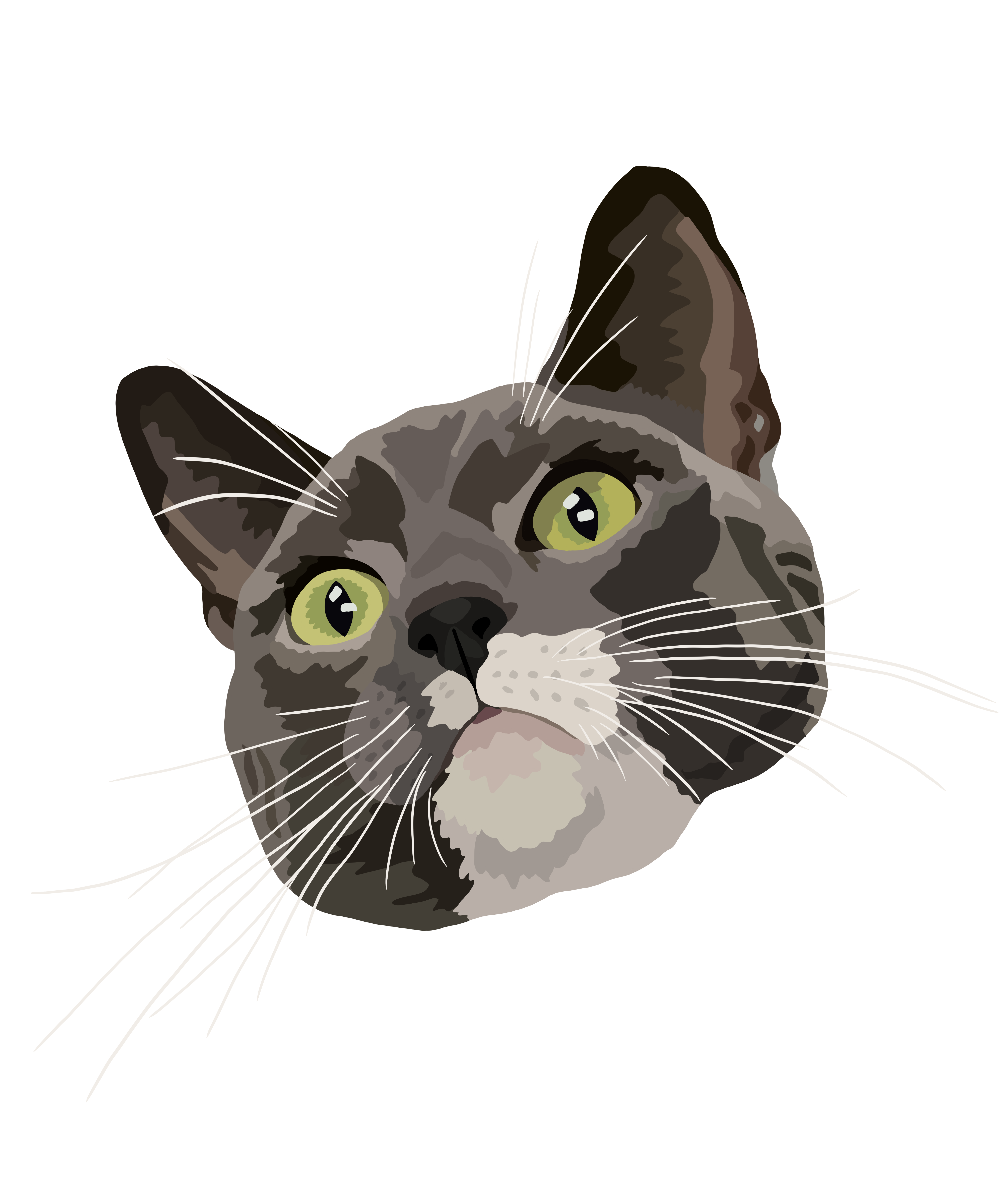Living in New Orleans, there is a good chance you have encountered the odd cat darting across the street to find refuge under a raised house or have seen a tail-wagging dog being walked down the sidewalk donning an ‘adopt me’ harness. The fact is, when it comes to animal welfare and companion pets, New Orleans stands out in both good ways and bad.
One factor that had a fundamental impact on animal lives—as it did with so many other aspects of the city—was the landfall of Hurricane Katrina in the late summer of 2005. As residents and visitors fled the sunken streets, countless pets, strays, and shelter animals were left behind. Unfortunately, many of these souls perished in the ensuing storm. However, once the rain and wind subsided and efforts to restore the city had begun, the animals left adrift in the deserted streets created a new concern.

COOPER- Cooper is a large bully-type mix currently available for adoption through Cane Haven Rescue.
Perhaps due in part to access issues, or perhaps because of cultural values, companion animals in Louisiana—and the South as a whole—have a significantly higher likelihood of being unaltered compared to other urban areas and the rest of the country. While some may find the concept of a surgical alteration to their beloved pet as being inhumane or unnecessary, the spaying or neutering of dogs and cats has numerous health benefits and behavioral advantages, not to mention the positive effect on curbing overpopulation.
According to a 2014 survey from the Humane Society of the United States, most of the unaltered pets they encountered were found in underserved communities. Of the over 23,000 total cases of unfixed pets recorded, 77% reported having never seen a veterinarian. However, upon being offered low-cost spay and neuter services, 74% agreed to have the surgery done for their pet. These figures imply that—given the proper education and understanding of the procedure—cost and access are the main barriers to a higher rate of fixing.
As a city, New Orleans has acknowledged this obstacle. While there has been a spay-neuter ordinance that requires a yearly permit to keep an unaltered pet since 2010, a lack of enforcement and barriers to access render the policy ineffective if not addressed. Access is one leading way organizations are attempting to solve the overpopulation issue in New Orleans. Throughout the area, there are numerous resources available that provide low-cost spay and neutering for pet owners. Furthermore, many animal rescue organizations operate Trap-Neuter-Release (TNR) programs. These are free or low-cost services that target stay and community cats, allowing residents to request somebody from one of these organizations to come out to their neighborhood and lay a humane live trap for a stray cat. Once trapped, the animal is taken in to be spayed or neutered and is returned to their original place of capture after they have recovered. You can tell when a cat has been fixed through this process by their ears, as while they are in surgery, the veterinarian will clip off the top of one of their ears (referred to as ‘ear-tipping’) so that an already-fixed animal is not retrapped. Under this article, there will be a link to resources for low-cost spay and neuter clinics, as well as local TNR programs.

SCOOTER- Scooter is a grey and white domestic shorthair cat available for adoption through Animal Rescue New Orleans (ARNO).
While getting animals fixed is the best long-term way to address shelter and stray overpopulation, we still have to reckon with the fact that there are countless scared, lonely animals on the street and in facilities that need attention. Luckily, there are a number of non-profit animal shelters in the area that offer opportunities for the public to help. Beyond tax-deductible money donations (which are often very much needed), people can volunteer their time to walk dogs, work in the facilities, or conduct fundraisers. For teens, college students, or those with limited time or resources, these are great ways to get involved in animal welfare without having to make a huge commitment or alter your life.
However, for those who have the means and ability to take on more responsibility, adopting a pet from a shelter is one of the best ways to change these animals’ lives. When you give a dog or cat (or bunny or reptile) a home, you are getting an animal that has already seen a vet, been fixed and vaccinated and has a behavioral overview that speaks to its disposition. In return, you will get a companion for life who will be grateful every day for the safety and love you have given them.
To encourage people to see the beauty and potential in these animals, I have drawn digital portraits of some adoptable dogs and cats from local rescues. I encourage everyone to click the links provided and explore not only the animals’ listings— but the organizations they are housed through as well as any other animals that may be up for adoption.
LINKS AND RESOURCES:
For free or discounted spay and neuter resources through LASPCA Community Clinic, visit https://www.louisianaspca.org/clinic/services/ or call at (504) 368-5191
 NOLAbeings Multimedia artist Claire Bangser created NOLAbeings as a portrait-based story project that marries...
NOLAbeings Multimedia artist Claire Bangser created NOLAbeings as a portrait-based story project that marries...  Voodoo in New Orleans: Reviving history: New Orleans fortune telling This article takes a deep dive into the history of Voodoo in New Orleans, its hybridization with Catholicism, and its present-day place in the city's culture. The author visits fortune-tellers in the French Quarter, using their guidance as a tool for introspection rather than a deterministic predictor of the future. Through her experiences in New Orleans, the author feels a mystical connection to both the past and the future.
Voodoo in New Orleans: Reviving history: New Orleans fortune telling This article takes a deep dive into the history of Voodoo in New Orleans, its hybridization with Catholicism, and its present-day place in the city's culture. The author visits fortune-tellers in the French Quarter, using their guidance as a tool for introspection rather than a deterministic predictor of the future. Through her experiences in New Orleans, the author feels a mystical connection to both the past and the future. 